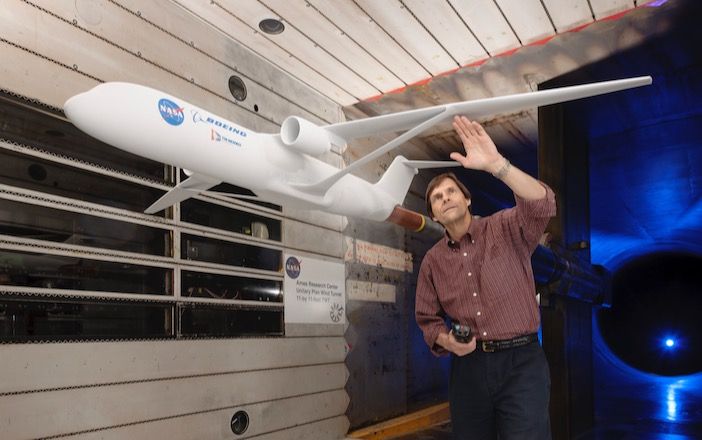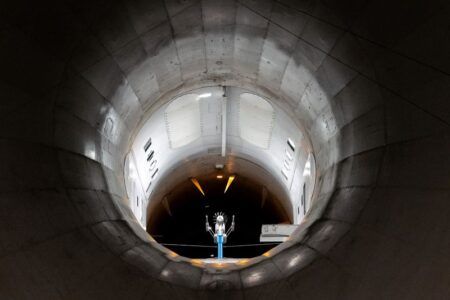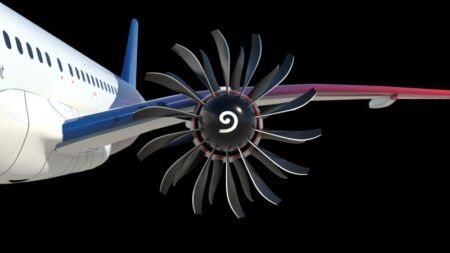Researchers at NASA’s Ames Research Center in the USA are testing a truss-based wing concept for transport aircraft in wind tunnels.
The research program, which is being undertaken with Boeing aims to develop a longer, thinner and lighter wing that uses a brace for support.
Boeing and NASA have been researching and testing similar designs for almost a decade.
The researchers predict that the lower drag truss-braced wing will reduce fuel burn and carbon emissions by at least 50% when compared to current-generation transport aircraft, and by 4 to 8% compared to equivalent advanced technology conventional configurations with unbraced wings.
The wind tunnel model tested has a 50% greater wingspan than a comparable aircraft. Engineers are using computer modeling of aerodynamics to iterate the design in order to minimize aerodynamic drag and increase lift.
Wind tunnel testing with models is being used with different experimental techniques to validate the computations and aircraft performance predictions.
Engineers are currently analyzing results from the recent test and plan to further explore the wing design.
The truss- braced wing is part of NASA’s Advanced Air Transport Technology project, which addresses the challenge of developing energy efficiency improvements to reduce emissions and perceived community noise dramatically without adversely affecting safety.





